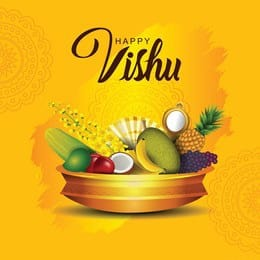Thiruvananthapuram, April 14 (IANS) Over the years, the festival of Vishu in Kerala has continued to evolve, gradually taking on a more secular character. Like many other Indian festivals, Vishu is now celebrated by people across communities, with even non-Hindus participating in many of its customs and rituals.
Traditionally marking the beginning of the Malayalam New Year, Vishu falls on the first day of the Malayalam month of Medam, which typically corresponds to April 14 or 15 on the Gregorian calendar. This year, Vishu is being celebrated on Monday.
A key highlight of Vishu is the preparation of the Vishukkani — a ceremonial arrangement of auspicious items meant to be the first sight one sees on Vishu morning.
The Vishukkani typically includes a statue or image of Lord Krishna, fresh flowers, fruits, vegetables, gold coins, and a mirror, all placed in a traditional bell-metal vessel called an uruli.
Another cherished tradition is the Vishu Kaineettam, where elders give money to younger members of the family as a symbol of blessings and good fortune. Temples across the state also witness heavy footfall, with devotees thronging in to seek blessings.
On this day, Keralites can be seen in traditional attire — women in sarees, young girls in skirts and blouses, and men in mundu or dhotis. However, one noticeable change over the years is the absence of large joint family gatherings, a result of modern-day work pressures and changing lifestyles.
Though rooted in Hindu mythology, Vishu today is not just a religious festival but also a cultural celebration. It’s a public holiday in the state, and many households prepare the elaborate 26-dish Vishu sadya (feast), served on a plantain leaf.
Interestingly, the sadya varies regionally — while the central and southern districts of Kerala serve strictly vegetarian meals, their northern counterparts often include non-vegetarian dishes alongside the traditional fare.
The bursting of firecrackers on Vishu eve is another regional distinction, commonly observed in North Kerala but largely absent in the rest of the state.
For the business community — especially jewellers and textile merchants — Vishu brings a seasonal boost in sales. Restaurants too have capitalised on the occasion, offering packed versions of the traditional sadya, with prices ranging anywhere from Rs 250 to Rs 2,500, depending on the brand and scale.
–IANS
SG/SKP
Follow Times Report on Google News , Youtube , Whatsapp , Twitter , Instagram and Pintrest for more updates.







